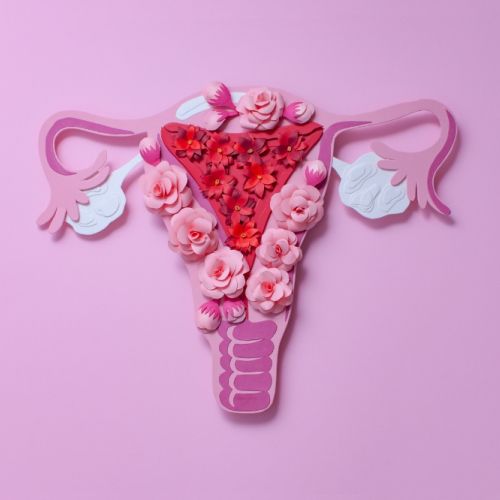High Fertility Vs. Peak Fertility

If you’ve been actively trying to get pregnant and haven’t been successful, one thing to consider is when you’re the most fertile. Conception can only happen during your fertile window, a period of time that lasts about a week out of the month. Getting the timing right depends on understanding the difference between high fertility vs. peak fertility.
You may have been told that ovulation happens around day 14 of your menstrual cycle, but it’s not that simple. Cycles can vary as much as seven days, so your fertility window may not be when you think it is.
Ovulation and Your Fertility Window
Ovulation is when hormone changes prompt one of your ovaries to release an egg. Once an egg is released, it must be fertilized by sperm within 24 hours for pregnancy to happen. This doesn’t mean that there’s only one day out of the month when you can get pregnant, because sperm can live for up to five days.
High fertility is the onset of the fertility window and it starts five days before ovulation. This is the time frame in which an egg could be fertilized by sperm that are living in your body for a few days. Peak fertility happens toward the end of the fertility window and refers to the two days in the month when you have the best chance of getting pregnant, which are the day you ovulate and the day before you ovulate.
Signs of Ovulation
Since increasing your chances of getting pregnant depends on having intercourse as close to ovulation as possible, it may be helpful to try to pinpoint when ovulation happens. During ovulation, some women experience cramping or bloating. There may also be an increase in basal body temperature, changes in cervical mucous or an increased sex drive.
Even if you don’t have any symptoms of ovulation, there are some things you can do that can help you to recognize your fertility window. Tracking your basal body temperature daily for several months may help you to identify a pattern. This requires a special thermometer that show two decimal places rather than one. Take your temperature daily first thing in the morning before getting out of bed and pay attention to a rise in your temperature. It may only be about half a degree. This subtle increase in temperature happens after ovulation.
Another way to pinpoint ovulation is to take an ovulation test, a test that’s available online or at a nearby drugstore. This type of test works by checking your urine for hormones. When hormones are high, ovulation is about to happen.
Timing sex around high fertility and peak fertility gives you the best chance of getting pregnant, but there’s no guarantee this will work. Infertility has many possible causes and if you’re struggling to get pregnant, it’s time to work with a fertility expert to find out what options are available that may help. Schedule a consultation at the Center for Reproductive Health today.
Eliran Mor, MD
Reproductive Endocrinologist located in Encino, Valencia & West Hollywood, CA
FAQ
What does a reproductive endocrinologist and infertility specialist do?
Reproductive endocrinology and Infertility is a sub-specialty of Obstetrics and Gynecology. In addition to managing medical and surgical treatment of disorders of the female reproductive tract, reproductive endocrinologist and infertility (REI) specialists undergo additional years of training to provide fertility treatments using assisted reproductive technology (ART) such as in vitro fertilization.
Reproductive endocrinologists receive board certification by the American Board of Obstetrics and Gynecology in both Obstetrics and Gynecology and Reproductive Endocrinology and Infertility.
When should I see an REI specialist?
In general, patients should consider consulting with an REI specialist after one year of trying unsuccessfully to achieve pregnancy. The chance of conceiving every month is around 20%, therefore after a full year of trying approximately 15% of couples will still not have achieved a pregnancy.
However, if a woman is over the age of 35 it would be reasonable to see a fertility specialist earlier, typically after 6 months of trying.
Other candidates to seek earlier treatment are women who have irregular menses, endometriosis, fibroids, polycystic ovary syndrome (PCOS), women who have had 2 or more miscarriages, or problems with the fallopian tubes (prior ectopic pregnancy).
What are the reasons we are having trouble conceiving?
Approximately 1/3 of the time cause for infertility is a female factor, 1/3 of the time a male factor, and the remaining 1/3 a couples’ factor.
At CCRH, we emphasize the importance of establishing a correct diagnosis. Both partners undergo a comprehensive evaluation including a medical history and physical exam.
Furthremore, the woman’s ovarian reserve is assessed with a pelvic ultrasound and a hormonal profile. A hysterosalpingogram (HSG) will confirm fallopian tube patency and the uterine cavity is free of intracavitary lesions. A semen analysis is also obtained to evaluate for concentration, motility, and morphology of the sperm.
Additional work up is then individualized to direct the best possible treatment option for each couple.
What is IVF? What is the process like?
In vitro fertilization (IVF) is the process that involves fertilization of an egg outside of a woman’s body.
The process starts with fertility drugs prescribed to help stimulate egg development. In your natural cycle, your body is only able to grow one dominant egg, but with stimulation medication we can recruit multiple eggs to continue to grow. After about 8-10 days of stimulation, the eggs are surgically retrieved and then fertilized with sperm in a specialized laboratory. Fertilized eggs are then cultured under a strictly controlled environment within specialized incubators in the IVF laboratory for 3-5 days while they develop as embryos. Finally, embryos (or an embryo) are transferred into the uterine cavity for implantation.
Should I have IVF?
Before deciding if IVF is the right choice, it’s important to sit down with an REI specialist to discuss available treatment options. For some people, other methods such as fertility drugs, intrauterine insemination (IUI) may be the best first choice treatment. At CCRH, we believe each individual couple is unique and not everyone needs IVF.
Is the IVF procedure painful?
While not painful, the fertility medications may some side effects including headaches, hot flashes, mood swings, and bloating. The injection sites may also bruise.
Will IVF guarantee a baby?
Unfortunately, no. Many people think once they start IVF it’s a matter of time that they will be pregnant and have a baby. But according to national statistics per the Society of Assisted Reproduction (SART), on average 40% of assisted reproduction cycles achieve live births in women under age 35. The chances of success then continue to decrease with advancing age.
At CCRH, we employ only evidence-based interventions to ensure patient safety and optimal outcome. While we cannot guarantee a baby, we guarantee that you will receive the best, most advanced, personalized care to help you maximize your chance of a baby.
What is the success rate for IVF?
The average IVF success rate (success measured in live birth rate) using one’s own eggs begins to drop around age 35 and then rapidly after age 40. This is due to the decline in egg quantity and egg quality as a woman ages.
Our clinic’s success rate consistently beats the national average year after year.
Do insurance plans cover infertility treatment? How much does IVF cost?
Individual insurance plans often do not have any coverage for infertility treatments. If you have a group plan, you can call members services to see if they have coverage for infertility (including consultation/workup and IVF).
After your consultation with our REI specialist, one of our dedicated account managers with sit with you to go over the cost of treatment.




